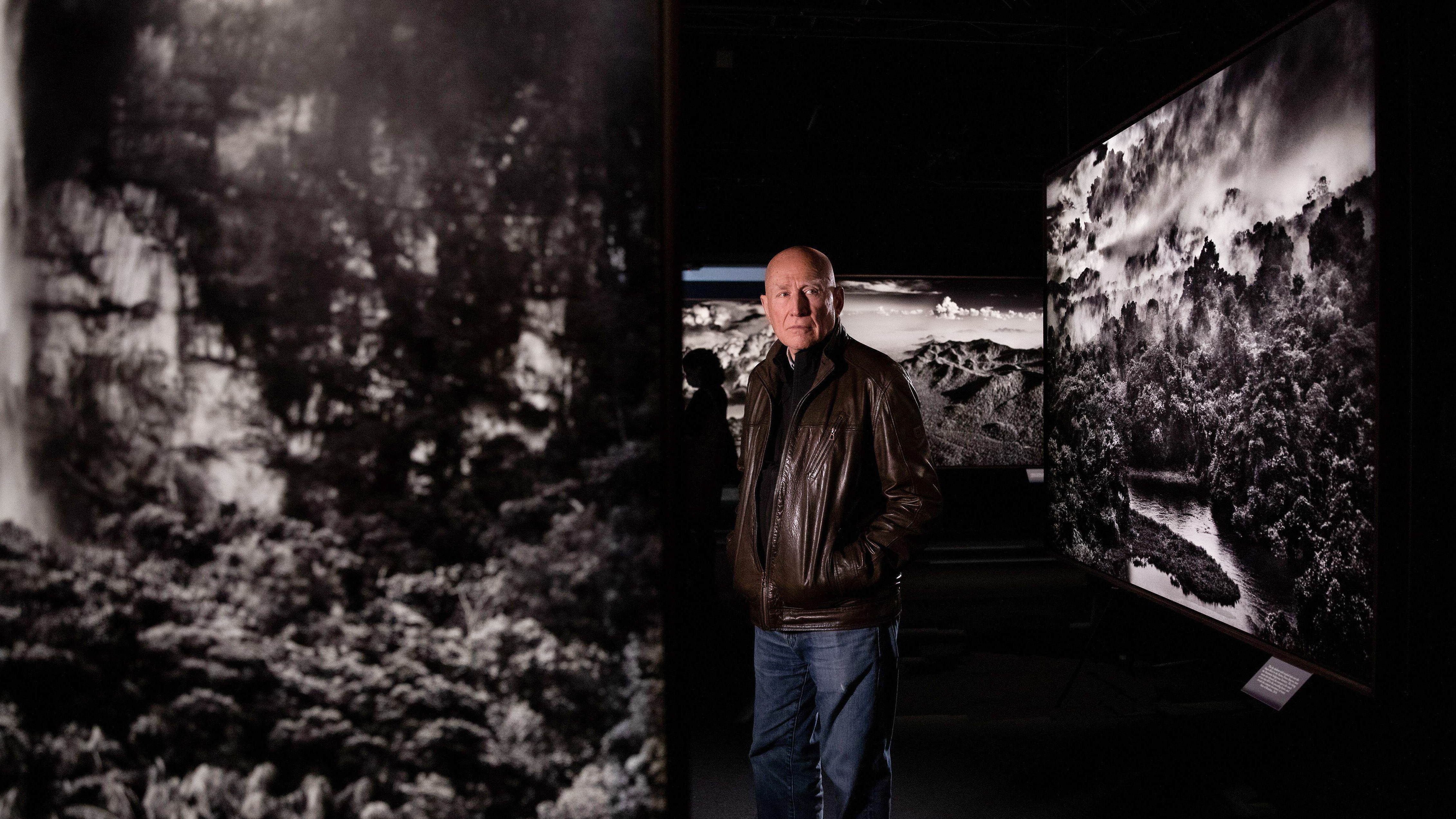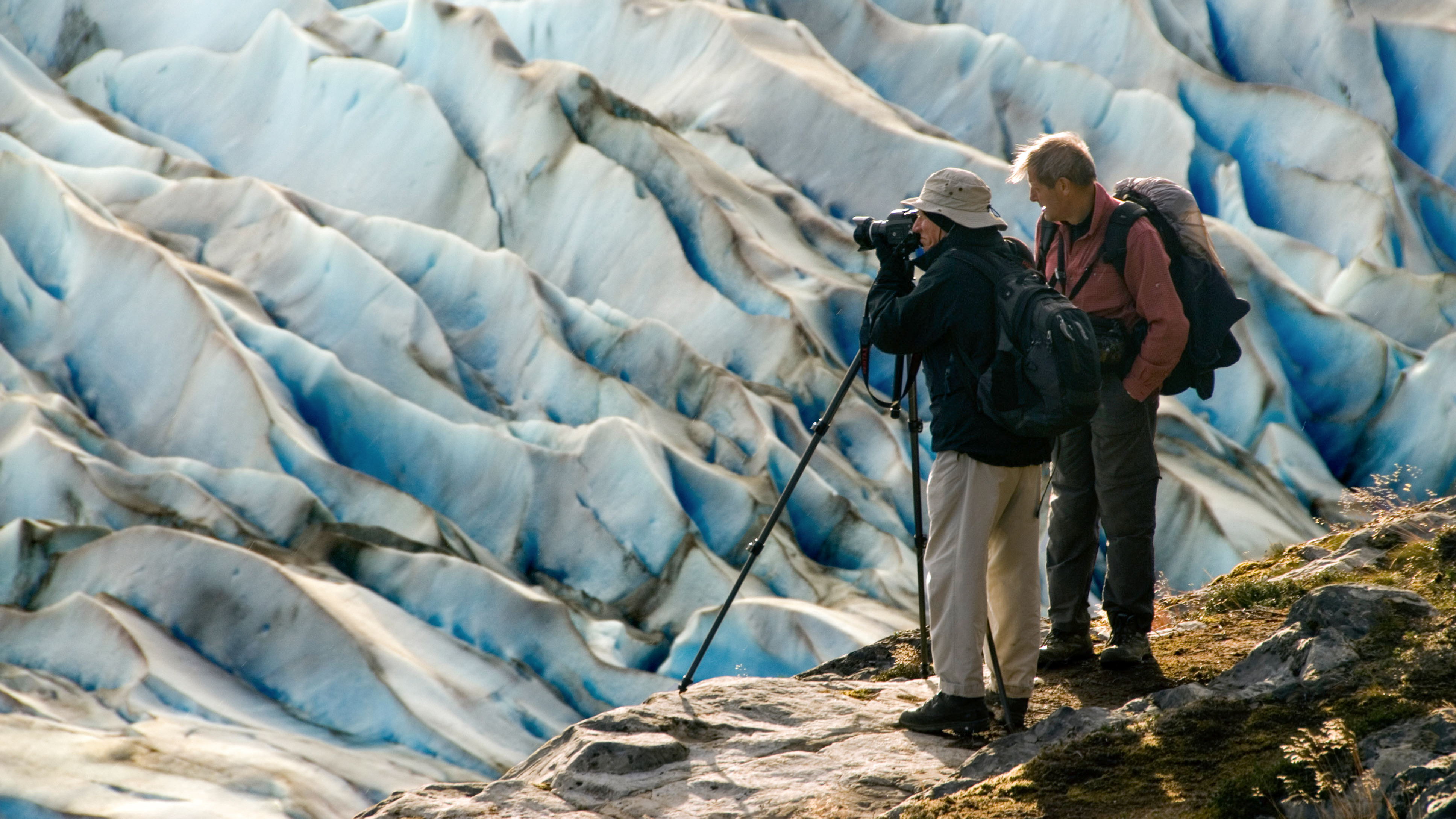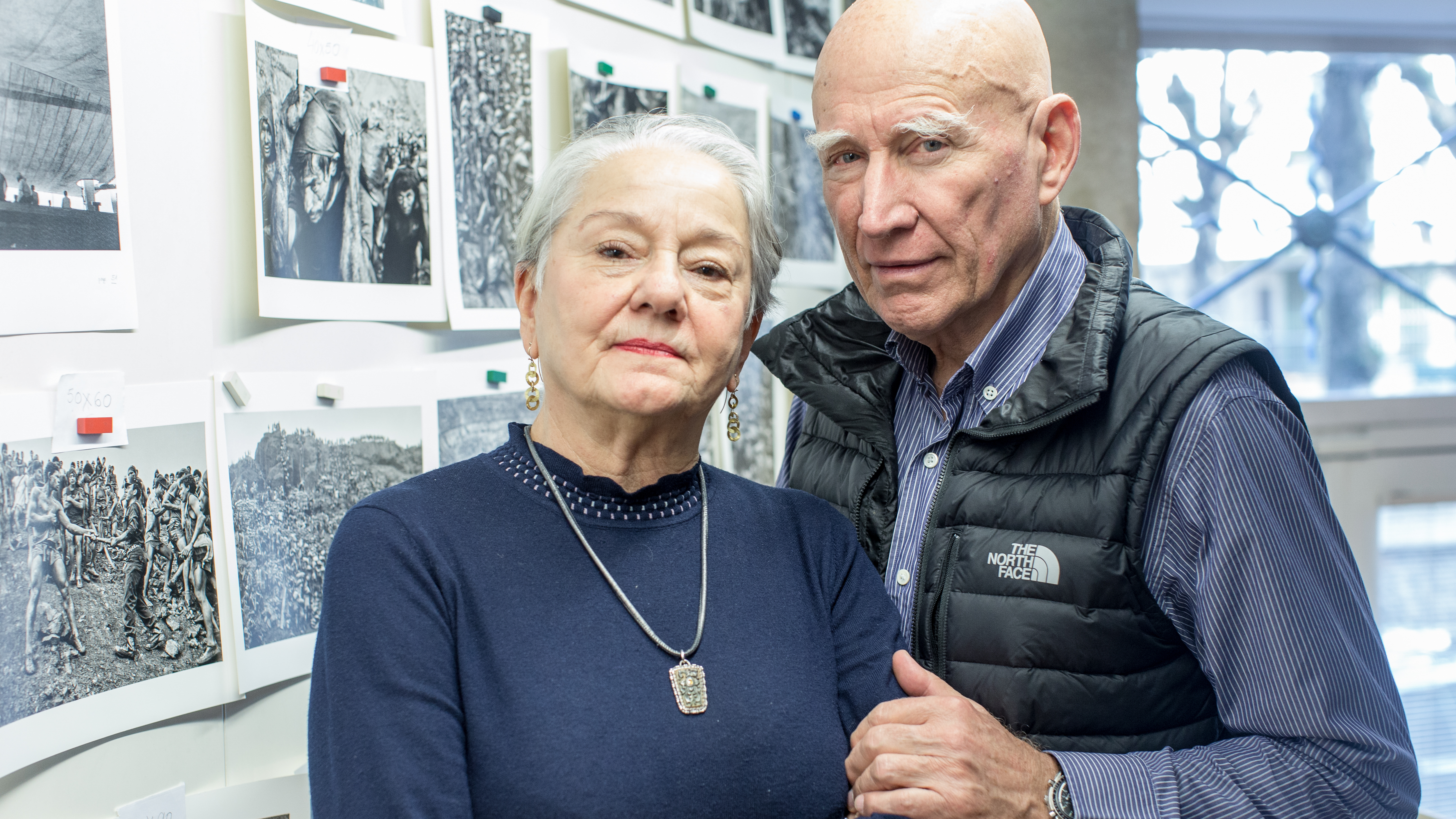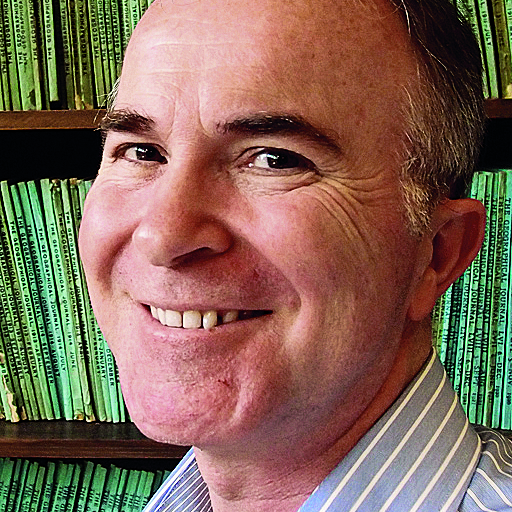Sebastiao Salgado in his own words: "My photography is my life; it’s my way of life. If people, after I disappear, use my photography as a reference of the moment that I lived, OK, that can become a legacy, but now I cannot speak about legacy"
Following his death we remember celebrated photographer Sebastiao Salgado through this 2017 interview where he talked about his work, his wife and his death
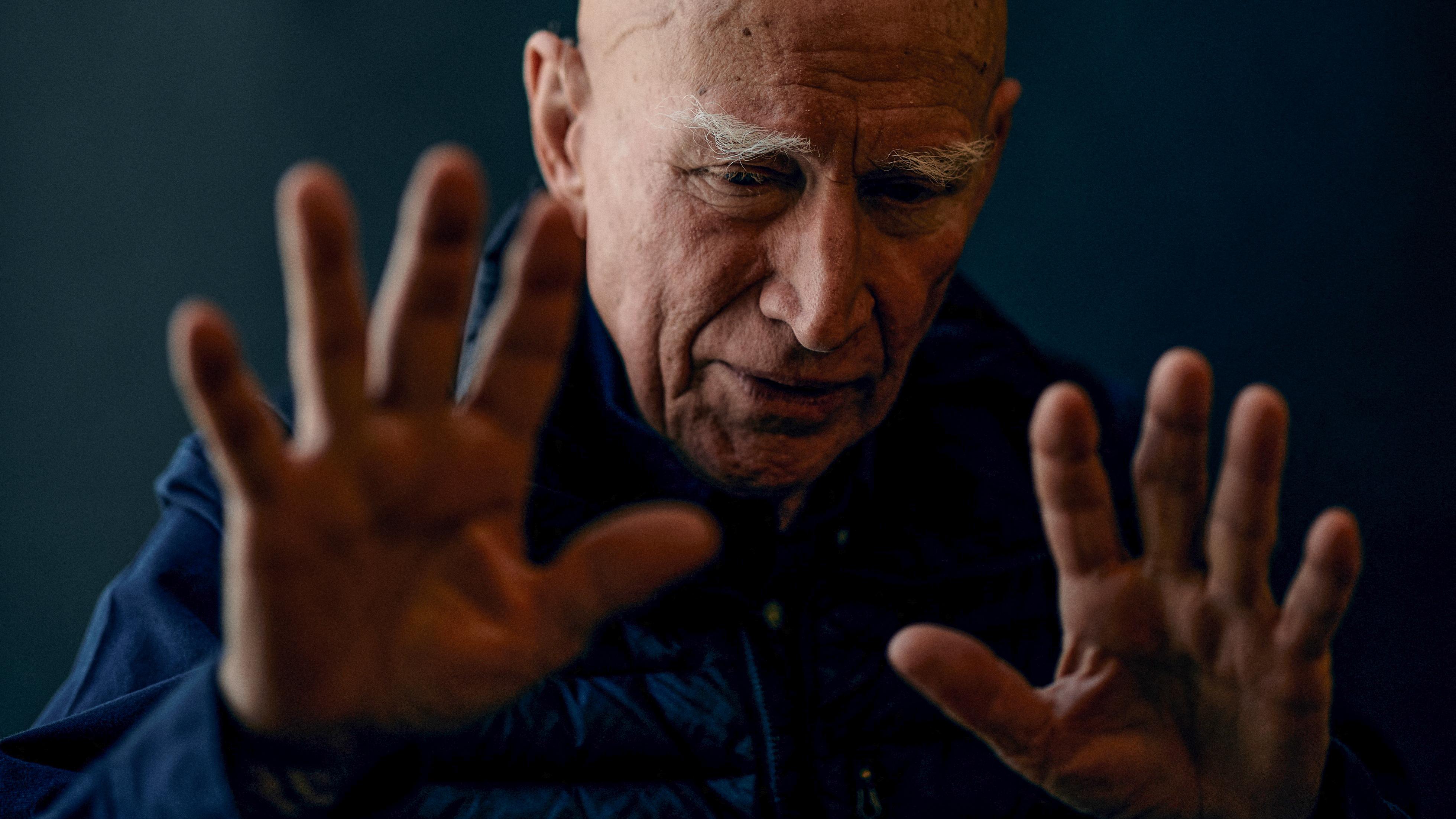
The death of celebrated photographer Sebastiao Salgado was announced on Friday, following a long struggle with leukemia.
Salgado was born in Brazil in 1943, and lived in Paris since moving there with his wife Lélia in the 1960s, to study economics. His first books, Sahel: The End of the Road and Other Americas, were both published in France in 1986. Salgado’s many awards include the Oskar Barnack Award, the World Press Photo of the Year and the Dr Erich Salomon Award. Salgado’s life and work was famously documented in The Salt of the Earth, a 2014 film directed by Wim Wenders and Salgado’s son Juliano, which brought to the forefront the role Lélia played in her husband’s success.
He died in Paris on May 24 2025 from leukemia which he contracted from complications with malaria he caught in Indonesia while taking photos for his Genesis project in 2010.
Back in 2017, Digital Camera interviewed Salgado on the publication of his book Kuwait which depicted the graphic images he shot of of burning oil fields and the workers that were fighting to bring the wells back under control.
In this free-ranging interview with Keith Wilson, Salgado talks about his long career, the way he worked, the influence of this work, and his thoughts on the legacy he would leave when he died. We reproduce the words of this interview in honor of what many had called "the world's greatest living photographer"…
Sebastião Salgado was known for the epic scale of his photo projects, which involve years of planning and editing; a painstaking devotion to the creation of books as heavy as coffee tables; and exhibitions that fill the world’s grandest museums.
Salgado’s first great book, Workers, published in 1993, is a prime example of his ambition: over a six-year period, the Brazilian-born photographer travelled across 23 countries, taking more than 10 thousand negatives of what playwright Arthur Miller described as “the pain, beauty and brutality of the world of work on which everything rests”.
For Salgado, who also wrote the text accompanying the 350 black-and-white photographs, Workers was “a farewell to a world of manual labour that is slowly disappearing, and a tribute to those men and women who still work as they have for centuries”.
Before discovering photography, Salgado grew up on a cattle ranch in Brazil, then moved to Paris in the 1960s to study economics at university. After graduating, he joined the International Coffee Organisation in London as a macroeconomist. Student politics, economics and the role of manual labour provided the inspiration for Workers.
The best camera deals, reviews, product advice, and unmissable photography news, direct to your inbox!
He recalls: “I made my studies as an economist, I made studies of the macro economy, and I made studies of Marxism where proletarians were important. So, you know what I wished to do? I started with the proletarians and went to photograph the workers of this planet over many years.”
Salgado’s lens accentuated the harsh and grim reality of the working lives of shipbreakers, cane cutters, steel makers, miners and fishermen, while also bestowing a nobility and stoicism onto his subjects that left no doubt about his own political sympathies. He explains: “You see, everything that I did was linked to my preoccupations with my way of life, from the studies that I made from my political orientation. I love very much to work on a long-term project where it is possible for me to put myself inside – to have a dedication, a concentration and identification with the things that I’m looking at photographing.”
Workers covered far more than impoverished manual labour in the developing world: Salgado also went underground to document the excavations of the Channel Tunnel, and to the oil-drenched deserts of Kuwait in the aftermath of the first Gulf War in 1991. Of the dangerous assignments undertaken during his career, this was one of the most perilous, as he witnessed the seemingly unstoppable inferno of more than 700 oil wells set ablaze by Saddam Hussein’s retreating troops. While photographing the firefighters, Salgado captured a burnt-out landscape still littered with cluster bombs and the scorched remains of camels, beneath a sky filled with acrid black smoke and soot; the sweltering temperatures were so intense that one of his lenses warped.
It is only in the past year that he has returned to this body of work to reveal the unpublished frames accompanying those now-iconic prints of exhausted firemen. “This is a story I made 26 years ago,” he recalls. “I had an assignment with The New York Times Magazine and we published some of them.”
Seven of the Kuwait photos were also published in Workers, but the contact sheets and negatives remained undisturbed as Salgado became immersed in a succession of epic publications: Terra (1997), Migrations (2000), Africa (2010), and the grandest of them all, Genesis (2013).
He continues: “Last year I made a decision: I must look again at this story. I am sure I have an interesting set of pictures. I looked at my contact sheets and I saw that I have a set of pictures that was reasonable, and so I went to my publisher.”
Salgado’s re-examination of his contact sheets turned up 83 exposures for Kuwait: A Desert on Fire, published in 2016 by Taschen, and now exhibited at La Photographie Galerie in Brussels. “About 70 per cent or 80 per cent of the pictures have not been published before,” he says.
During his years of shooting film, Salgado favored Leica M rangefinders. For his 1993 book Workers, he used Kodak Professional black-and-white films.
Salgado switched to digital on the huge Genesis project, using a Canon EOS-1D X and a 1DS Mark III, plus the following lenses:
• EF 24mm f/1.4L II USM
• EF 35mm f/1.4L USM
• EF 50mm f/1.2 USM
• EF 100mm f/2.8L Macro IS USM
• EF 300mm f/4L IS USM
• EF 24-70mm f/2.8L USM
• EF 24-105mm f/4L IS USM
• EF 70-200mm f/4L IS USM
• EF 1.4x II Extender
More recently he had been using a Canon EOS R5 Mark II.
Salgado depicts the world in black and white, but in his early days he shot many magazine assignments in color while working for the Paris-based agencies Sygma and Gamma. “It was necessary for me to survive, and I photographed in color; but I am not a color photographer. I do not see things in color.” For Salgado, color is an unwanted distraction. By photographing in black and white, he believes he can better understand the subject he is photographing, and construct a photo story to match his vision.
He cites another, more practical reason for eschewing color: “In color, it was slides that we were photographing at the time; and when you select the two or three that are the good pictures of the few, you put the others aside and you lose all the sequence of the article, and you have a very short story. In my journey to photograph Kuwait, I selected 10 or 20 pictures that I liked the most and I left the others. But now I can come back, and on my contact sheet everything is there. Because all that I have photographed is in black and white, I have all my films, all my contact sheets, and I have everything. It is my life that is there.”
Salgado’s photography is primarily film-based, but the making of Genesis marked his switch to digital capture, and the beginning of the digitalisation of his archives.
Although he uses digital capture, Salgado upholds an analogue style of working, producing digital contact sheets and making test prints of his chosen exposures. He explains: “I do a contact sheet. I cannot edit in a computer, I edit my pictures with a loupe and we choose; then my assistant makes for me the work prints, and I choose, and we print like this.”
Salgado’s passion for black-and-white printing is also matched by his devotion to depth of field. Look at any of his photographs and there is so much front-to-back sharpness and so many finely focused areas in the frame that you can immediately see another reason to shoot in black and white and thereby reduce, as he says, “all the flashy colors, the red, the blue, the green” to shades of grey.
“Yes, I love depth of field,” he says. “I like to have the volume – like life gives me the volume, my eyes give me the volume. I like to work very clear and I prefer to close my diaphragm, to work in f/16, f/19; because it is beautiful to see the separation, the spaces all inside the picture. I like to photograph large. There is a lot of information inside my pictures. To have information I must give space, and to give space I must give depth of field.”
The transformation of Salgado the economist to Salgado the photographer would not have happened if it wasn’t for Lélia, his wife of over 50 years, who used a camera to help with her architectural studies. “It was 1970 when my wife bought a camera, and I looked for the first time inside a viewfinder, and for me it was so amazing. It was just fabulous. Fantastic.”
From that moment, he says, photography “made a total invasion of my life”. He acquired a darkroom and learned to print. After a few years, the passion for photography overwhelmed his professional work as an economist, and he decided “to drop everything to become a photographer”.
Lélia’s early career as an architect funded many of Salgado’s first tentative steps as a photographer. Today, he is devoting more time to examining his earliest pictures, from the days when Lélia and he were first establishing themselves in Paris. “I have some incredible things that I forgot I had photographed,” he says. “I am looking at my life, and it is so moving. We made so many things together, we have suffered together, we have so much pleasure together, one life together.” He pauses before then declaring: “The oddest thing is I want to die before her because I don’t know, if she should die before me, how will I live without her? I’m 73 years old and Lélia is 70 and we are alive, but probably the most important thing in my life was the day I met Lélia. If my wife had not bought this camera, most probably you would not have a photographer called Sebastião Salgado: you would have an economist instead.”
Given the discussion of mortality and his current fascination with revisiting the photographs of his past, I ask Salgado what he believes will be his greatest legacy. “I have no legacy,” he responds without hesitation. “You see, my photography is my life; it’s my way of life. If people, after I disappear, use my photography as a reference of the moment that I lived, OK, that can become a legacy, but now I cannot speak about legacy. I can speak only about my way of life.
“Photography is my way of life. It is my motivation to live; my motivation is to photograph. That is it.”
A former award-winning editor of Amateur Photographer magazine, Keith is the founder of Outdoor Photography, which he edited from 2000 to 2007, Black + White Photography and Wild Planet, the world’s first monthly digital magazine devoted entirely to wildlife photography. He is a highly regarded competition judge and since 2016 has chaired the jury of the Nature Photographer of the Year awards. He is the co-founder (with Britta Jaschinski) of Photographers Against Wildlife Crime™, an international group of award-winning photographers who have joined forces to use their powerful and iconic images to help bring an end to the illegal wildlife trade.
You must confirm your public display name before commenting
Please logout and then login again, you will then be prompted to enter your display name.
